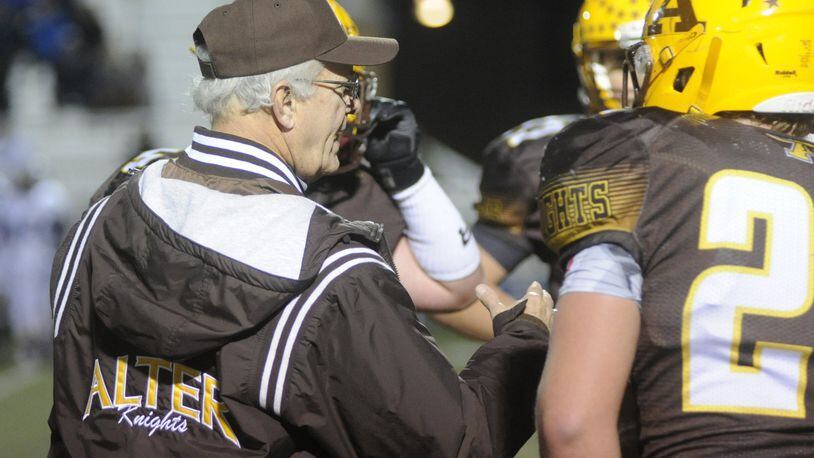RELATED: 7 things to know Competitive Balance
“I’ve already heard coaches talking about it would make sense to cut kids,” Alter football coach Ed Domsitz said. “If kids came from outside our district and they’re not likely to play and you don’t see them helping out, it would almost make sense to cut those kids. That’s sad for our sport. A number of kids need football more than football needs them.”
That’s the kind of unanticipated fallout Competitive Balance has ignited, and it won’t be implemented until this fall.
This is the OHSAA's landmark decision that was voted in place in spring 2014. A numeric formula assigned to every player – freshman, JV and varsity grades 9-11 – and multiplied by three factors will determine each school's division for the postseason. Most affected are schools that draw students from out of their school districts (public) and assigned feeders (private).
That mostly affects private schools but also will have an impact on public schools that offer open enrollment or have an abundance of tuition-paying students who don’t reside in the district.
Schools were notified by the OHSAA last week of the time schedule for implementing the numerical values for affected fall (football, boys and girls soccer, volleyball), winter (boys and girls basketball) and spring (baseball, softball) sports.
Domsitz has guided Alter to the longest-running football success in the immediate area. The Knights have done that in the middle of the now-seven divisions, D-III and D-IV. He said he’ll resist cutting players, but that’s likely not an option elsewhere.
“I’m not going to cut kids and I’ll play up,” Domsitz said. “But I don’t have 20 more years. I don’t have to worry that I’m going to lose my job and I have to look somewhere else to coach. If you’re 30-35 years old, there’s pressure on you to win ballgames, win league championships and get to the playoffs.”
All divisions in all sports will be affected except D-I, which can’t bump up any higher. That has created additional concern.
FACEBOOK: For more high school sports you should like Marc Pendleton
Ohio High School Football Coaches Association President Matt Dennison supports Competitive Balance. Dennison said other sports such as soccer, basketball and volleyball could be more affected. The multiplier for players is greater in those sports than for football.
“You have to ask yourself, where do your morals lie?” he said. “You’ve got two girls playing for a volleyball spot. The one’s a little bit better but she’s open enroll. She’s the one that’s going to get cut and the girl from the hometown is going to make it even if she’s not as good. You don’t want it to be that way, but coaches make those kinds of decisions even today.”
RELATED: Competitive Balance timeline
Private schools have the option of choosing one feeder/parish program to align with. Students who attend school elsewhere prior to high school enrollment will be assigned a greater multiplier.
That will hit schools such as Carroll hard. Athletic director Scott Molfenter said Patriots students are divided relatively even from Ascension (Kettering), St. Helen (Riverside), St. Luke (Beavercreek) and even St. Brigid (Xenia) parishes.
“We’re in a unique situation,” he said. “We’re a bit of a melting pot. There isn’t one school district where our kids overwhelmingly come from.”
The Competitive Balance formula will coincide during the upcoming two-year reclassification cycle for 2017-19.
“It’s a step in the right direction,” said Dennison, also New Philadelphia’s head football coach. “Is this the right step? We’ll find out.”
About the Author
